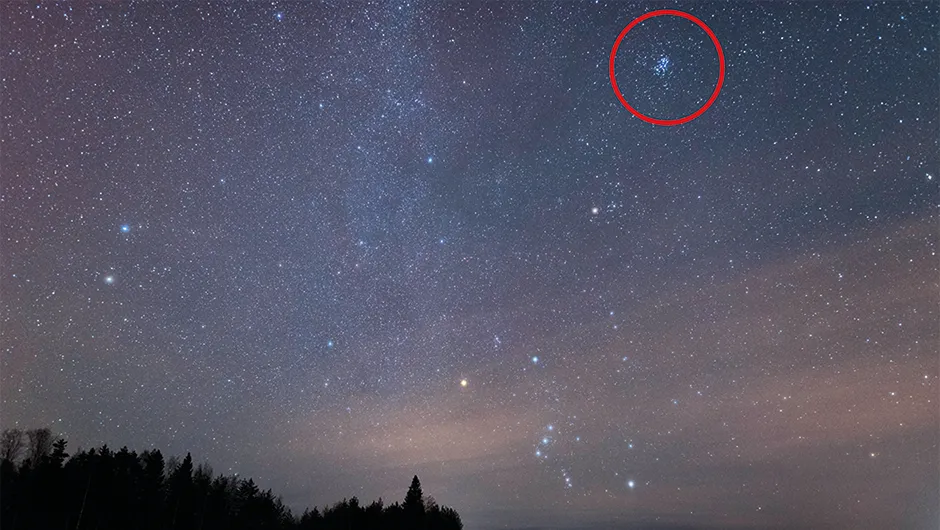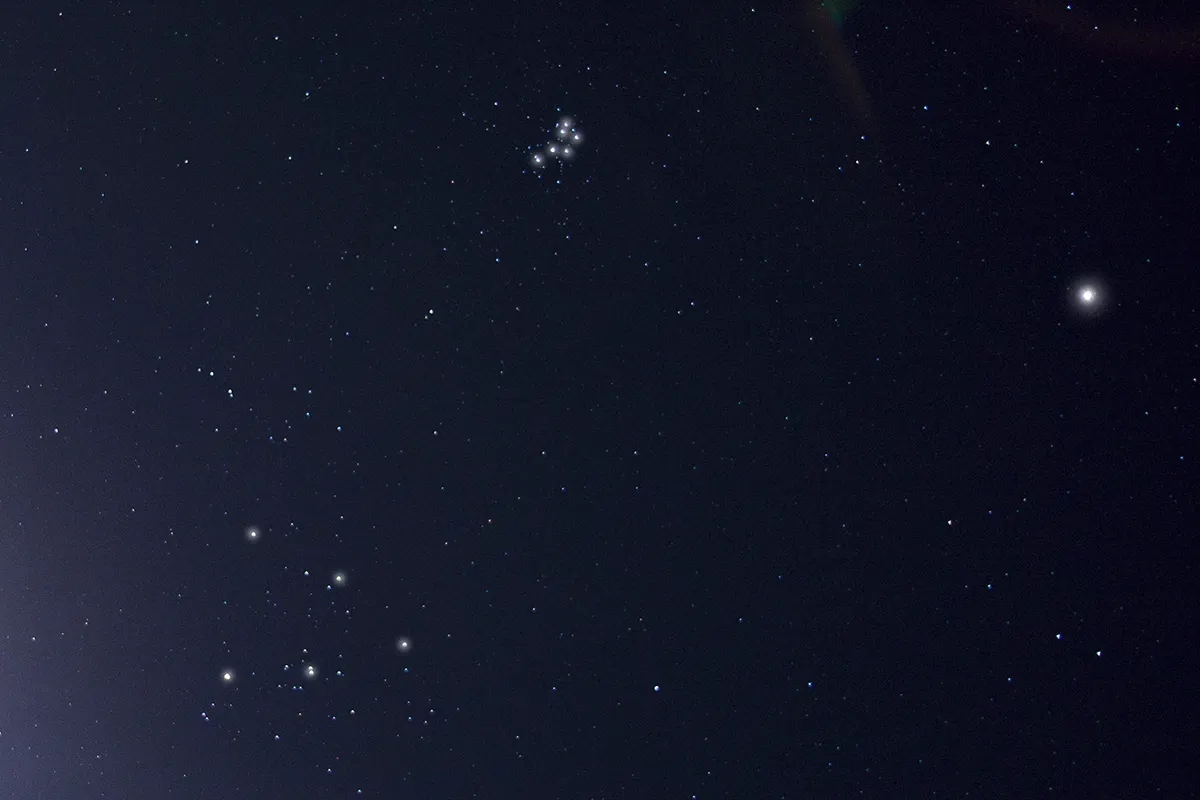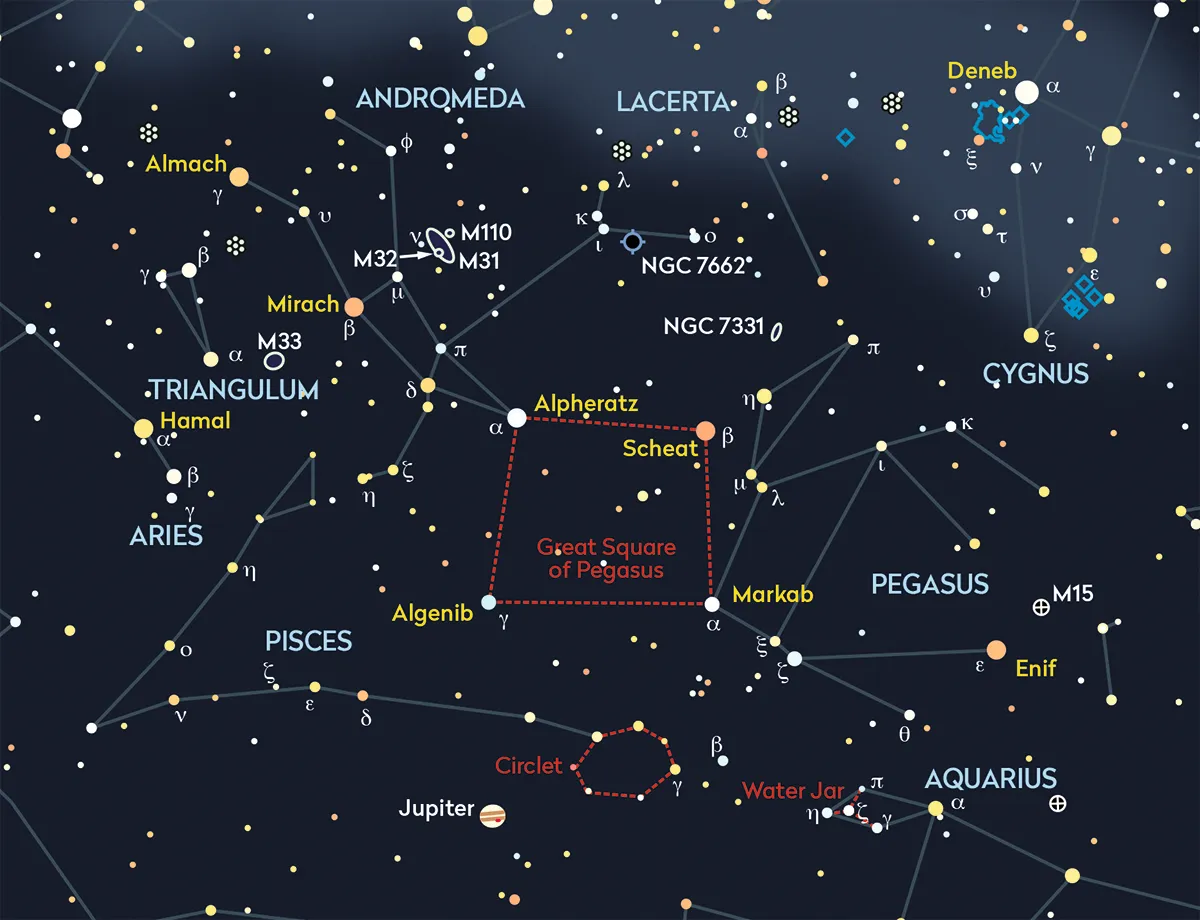If you've been out observing the supermoon this week and marvelling at its beauty, you're in for a treat tonight.
On 6 November, the Moon is only just after full, meaning it will still look big, bright and beautiful to the naked eye.
This is the Beaver Moon, a supermoon, and tonight it's joined by one of the most beautiful naked-eye objects you can see in the night sky.
Get weekly stargazing advice by signing up to our e-newsletter and subscribing to our YouTube channel

The Moon meets a beautiful blue star cluster
What makes tonight such a special night to see the Beaver Moon is that it's incredibly close to a blue star cluster known as the Pleiades.
The Pleiades, often known as the Seven Sisters as a reference to its connections to Greek mythology, is one of the easiest objects to see with the naked eye.
Normally, you can find the Pleiades by locating the distinctive formation of the constellation Orion, which is visible during the darker, colder months.

Look at the three stars of Orion's Belt and draw and imaginary line, from left to right, then extend that line up past the bright star Aldebaran in Taurus, and you'll see a bright 'smudge' with the naked eye.
Get out a pair of binoculars and you'll notice it's actually a cluster of blue stars that looks like a mini 'Big Dipper' or 'Plough'.
Tonight, however, you won't need Orion to help you find the Pleiades, because the Moon will be right next to it.

Observing tips for seeing the Beaver Moon near the Pleiades
The Moon will rise in the northeast just before the Sun sets. That means you should find yourself a clear northeastern horizon if you want to catch the Moon as early as possible.
As the sky grows dark and the Moon climbs higher towards the east, look above and to the right of the Moon and you may be able to see the Pleiades shining through the bright moonlight.
Grab a pair of binoculars for a closer look, and you'll get a much better view of the Pleiades.
As midnight approaches, the pair will be over in the southeast.
They'll grow apart in the night sky from the moment they appear above the horizon. That means the Pleiades will be easier to see, the later you observe.
This could make for a beautiful photographic opportunity. For more advice, read our guide on how to photograph a full Moon, and how to photograph the Pleiades.
Also in the night sky in November 2025
There's plenty to see in the night sky at the moment, as we enter the depths of dark-sky season and have truly long, dark nights.
Here are some of the best things to see
The Hyades

The Pleiades is easily visible with the naked eye, appearing as a blue smudge against the inky black darkness.
Look below it and you'll see the Hyades, another open star cluster that looks like a sideways 'V', punctuated by bright red star Aldebaran.
Orion

Keep observing the eastern horizon and, by around 10.30pm, you'll see the constellation Orion rising.
Orion is a true sign that winter is on the way. Get out your binoculars and explore the beautiful Orion Nebula, which hangs below the three stars of Orion's Belt.
Jupiter

At the same time Orion is visible, look further east and you'll see bright planet Jupiter, appearing as a bright star.
Jupiter is currently one of the best planets to see in the sky, but it's best seen between midnight and dawn.
However, if you have a clear enough horizon eastern horizon, you should be able to catch it before midnight.
Once you've found it, you'll notice it's forming a triangle with Castor and Pollux, the twin stars of Gemini.
Summer Triangle

It may seem counter-intuitive, but the three-star pattern known as the Summer Triangle is high and prominent in the sky at the moment.
It's made of stars Deneb, Vega and Altair, all of which are bright and visible with the naked eye.
You can see the Summer Triangle high in the southwest around 7pm. Once you've found it, see if you can locate and observe some of the Summer Triangle's deep-sky objects with your telescope.
Great Square of Pegasus

The Great Square of Pegasus is a four-star pattern made up of stars Alpheratz, Markab, Scheat and Algenib.
It's visible with the naked eye and you can see it all month. Locate it in the southeast around 19:00 UT and watch it climb higher in the sky until midnight, when it starts descending towards the western horizon.
Once you've found the square, use it to locate the Andromeda Galaxy, M31, visible in the chart above.
Share your stargazing adventures and images with us by emailing contactus@skyatnightmagazine.com
